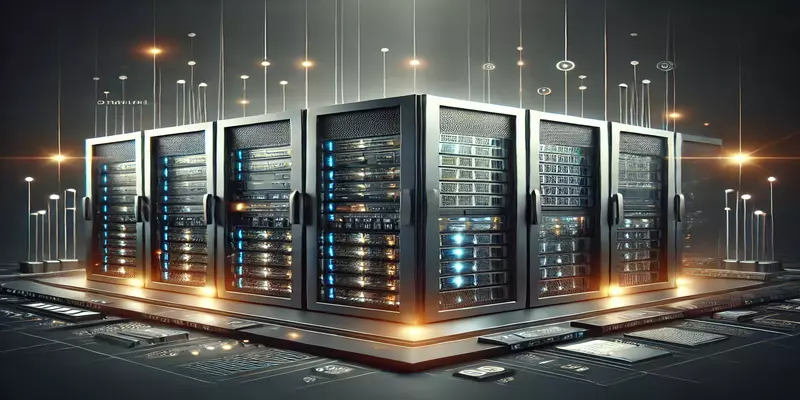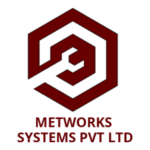When setting up an efficient data center, choosing the hardware is crucial—especially when organizing and protecting your equipment. One piece of infrastructure that often goes overlooked, but plays a huge role in keeping everything running smoothly, is the data center server rack. It’s more than just a metal frame. The right server rack can help maximize your space, improve cooling, and make managing your IT equipment much easier.
But with so many options out there, how do you choose the perfect one for your data center? Let’s break it down step by step so you can make an informed decision.
1. What Exactly is a Data Center Server Rack?
In simple terms, a data center server rack is a structure where you mount and organize your servers, networking devices, and other hardware. The idea is to use the space efficiently while allowing for proper airflow and easy access when you need to make changes or repairs.
Generally, there are two types of server racks:
- Open Frame Racks: These racks are just the frame, without any doors or side panels. They’re great if you need easy access to your equipment and are less concerned about security or environmental factors.
- Enclosed Racks: These racks come with doors and side panels that offer added protection from dust, environmental factors, and unauthorized access. They’re ideal if security or cleanliness is a priority.
2. Choosing the Right Size
One of the first things you need to think about is the size of the rack. You’ll most likely be dealing with 19-inch racks, which is the industry standard, but other dimensions—like height and depth—also matter.
- Height (Measured in U-Units): Server racks are typically measured in U-units, where 1U equals 1.75 inches in height. You’ll find racks that range from 24U to 48U. The higher the U-count, the more equipment you can fit.
- Depth and Width: Standard racks typically have depths between 36 and 48 inches. Before you buy, make sure your rack is deep and wide enough to accommodate all of your servers and other gear.
3. Can It Handle the Weight?
The next big thing to consider is how much weight your data center server rack can handle. Your servers, switches, and storage units can add up in weight fast, so you need to choose a rack that has a load capacity to handle it all.
Before making a decision, calculate the combined weight of all the equipment you’ll be putting in the rack, and make sure to leave some headroom for future additions.
4. Cooling and Airflow
Cooling is one of the most critical elements in keeping a data center running smoothly. Servers generate heat, and if that heat isn’t properly managed, you’re looking at potential system failures and downtime.
- Perforated Doors: Look for racks with perforated front and rear doors, as they allow better airflow to keep your equipment cool. You should also check if the rack supports hot and cold aisle containment, which helps direct airflow more effectively.
- Cable Management: Proper cable management is essential for airflow. Tangled or messy cables can block vents and cause overheating. Look for racks with built-in cable management features like vertical cable trays or organizers.
- Fans: Some racks come with built-in fans or allow for the installation of additional cooling units. This can be a game-changer, especially if your data center is in a warm environment.
Suggested Read: Choosing the Best Server Rack Manufacturers: A Comprehensive Guide
5. Security Features
Physical security is often overlooked, but it’s just as important as cybersecurity. If your data center houses sensitive information, you’ll want to make sure your data center server rack has proper security features.
- Lockable Doors: The simplest security measure is to get a rack with lockable doors, ensuring only authorized personnel can access the servers.
- Environmental Monitoring: Some high-end racks come with built-in sensors that track things like temperature, humidity, and motion. This way, you’re always aware of any potential threats.
6. Think About Future Growth
When choosing a server rack, it’s important to plan for the future. Will your data center need to grow? If so, opt for a rack that can scale with your needs. You might not fill all the U-units immediately, but having the extra space for future expansion is always a good idea.
A flexible data center server rack will also allow you to switch out hardware easily and accommodate different types of equipment.
7. Cable Management: The Unsung Hero
Messy cables not only look bad, but they can also block airflow and make troubleshooting a nightmare. So, don’t skimp on cable management when selecting your rack.
- Cable Channels: These keep your power and data cables neatly organized and out of the way.
- Cable Trays: These can be installed overhead or under the floor to keep cables tidy and ensure they don’t interfere with airflow.
8. What’s the Cost?
Finally, let’s talk budget. While it’s tempting to go for the cheapest option, remember that your data center server rack is an investment. A well-built, high-quality rack will last for years and prevent costly problems like overheating, hardware damage, or downtime.
It’s important to factor in the total cost of ownership, which includes not only the price of the rack itself but also installation, maintenance, and potential future upgrades.
Final Thoughts
Choosing the perfect data center server rack might seem like a small part of building a data center, but it’s one of the most critical decisions you’ll make. A well-chosen rack will help you maximize space, keep your equipment cool, and provide flexibility as your data center grows. By considering factors like size, weight capacity, cooling, security, and future scalability, you can ensure your investment pays off in the long run.
So, take the time to research and pick a server rack that fits your needs—it’s a decision that will benefit your data center for years to come!


